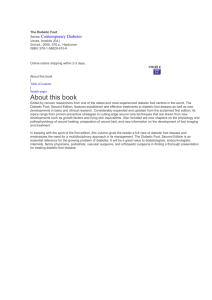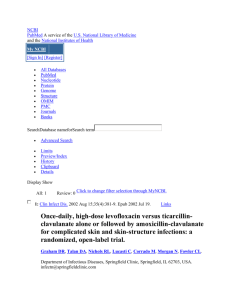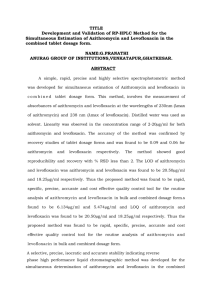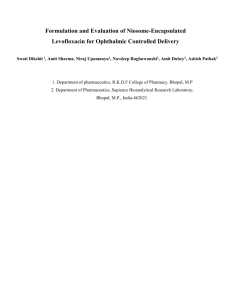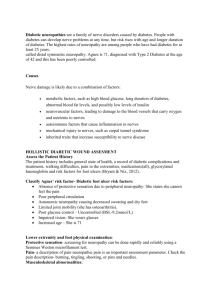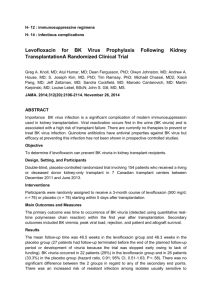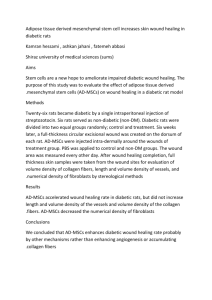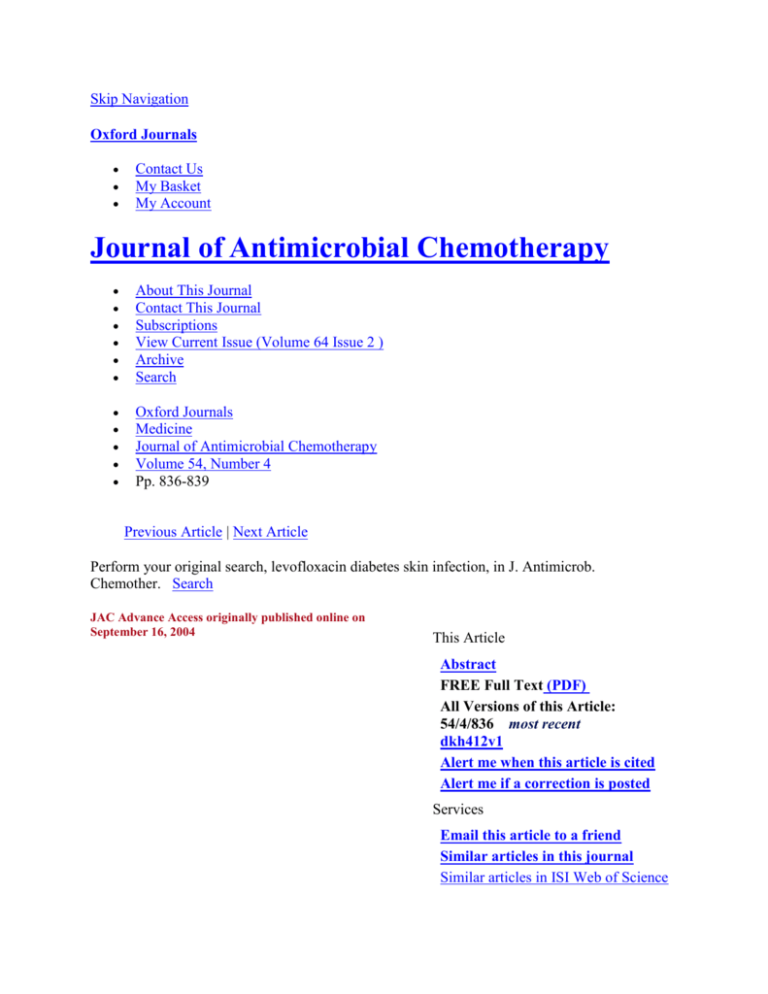
Skip Navigation
Oxford Journals
Contact Us
My Basket
My Account
Journal of Antimicrobial Chemotherapy
About This Journal
Contact This Journal
Subscriptions
View Current Issue (Volume 64 Issue 2 )
Archive
Search
Oxford Journals
Medicine
Journal of Antimicrobial Chemotherapy
Volume 54, Number 4
Pp. 836-839
Previous Article | Next Article
Perform your original search, levofloxacin diabetes skin infection, in J. Antimicrob.
Chemother. Search
JAC Advance Access originally published online on
September 16, 2004
This Article
Abstract
FREE Full Text (PDF)
All Versions of this Article:
54/4/836 most recent
dkh412v1
Alert me when this article is cited
Alert me if a correction is posted
Services
Email this article to a friend
Similar articles in this journal
Similar articles in ISI Web of Science
Journal of Antimicrobial Chemotherapy 2004 54(4):836-839;
doi:10.1093/jac/dkh412
JAC vol.54 no.4 © The British Society for Antimicrobial
Chemotherapy 2004; all rights reserved
Tissue and serum levofloxacin
concentrations in diabetic foot
infection patients
Similar articles in PubMed
Alert me to new issues of the journal
Add to My Personal Archive
Download to citation manager
Search for citing articles in:
ISI Web of Science (2)
Request Permissions
Disclaimer
K. Oberdorfer1,*, S. Swoboda2, A. Hamann3, U.
Google Scholar
Baertsch3, K. Kusterer4, B. Born5, T. Hoppe-Tichy2,
Articles by Oberdorfer, K.
H. K. Geiss1 and H. von Baum6
Articles by von Baum, H.
1
Institute of Hygiene, University of Heidelberg, Im
Search for Related Content
Neuenheimer Feld 324, D-69120 Heidelberg; 2
PubMed
Pharmacy Department, University of Heidelberg, Im
3
Neuenheimer Feld 670, D-69120 Heidelberg;
PubMed Citation
Division of Endocrinology and Metabolism,
Articles by Oberdorfer, K.
Department of Medicine, University of Heidelberg, Im
Articles by von Baum, H.
Neuenheimer Feld 410, D-69120 Heidelberg; 4
Outpatient Practice, P/24, D-68161 Mannheim; 5
Outpatient Department for Diabetics, Klinikum am
Steinenberg Reutlingen, Steinenbergstr. 31, D-72764
Reutlingen; 6 Institute of Hygiene, University of Ulm,
Steinhoevelstr. 9, D-89075 Ulm, Germany
Social Bookmarking
What's this?
Received 6 May 2004; returned 7 June 2004; revised 21 July 2004; accepted 22 July 2004
Top
Abstract
Introduction
Materials and methods
Results
Discussion
Acknowledgements
References
Abstract
Objectives: Levofloxacin has a high bioavailability and a broad antibacterial spectrum which
covers the common pathogens found in acute and chronic diabetic foot infections. The purpose
of our study was to determine the serum and tissue concentrations of levofloxacin when
administered orally in patients with infected diabetic foot ulcers and to compare these values
with microbiological findings.
Patients and methods: Ten outpatients with diabetes and ulcerations of the lower extremity were
included. All patients received oral levofloxacin therapy at a dose of 500 mg once daily. Wound
tissue and serum samples were collected and levofloxacin concentrations determined by HPLC
with fluorescence detection. Additionally, microbiological cultures were performed from swabs
and debrided wound tissue, both before and after treatment. MICs of levofloxacin for all bacterial
isolates were determined using the Etest.
Results: Following oral treatment with levofloxacin for an average of 10±3.8 days, all patients
received debridement at the affected limbs. The levofloxacin concentrations in necrotic wound
tissue were between 2.33–23.23 mg/kg and between 0.12–6.41 mg/L in serum. Tissue-to-serum
ratios of levofloxacin concentrations for each patient were >1.0. The MIC values for all 17
initially isolated bacteria were
2 mg/L. In half of our patients, fluoroquinolones were one of
the few oral monotherapy options where the spectrum covered all initially isolated pathogens.
Conclusion: Our data showed good tissue penetration of levofloxacin in diabetic foot ulcers. In
combination with adequate surgical debridement, levofloxacin seems well suited to the treatment
of skin structure infections of diabetics caused by susceptible organisms.
Keywords: quinolones , pharmacokinetics , soft tissue infections , diabetic foot infections ,
MRSA
Top
Abstract
Introduction
Materials and methods
Results
Discussion
Acknowledgements
References
Introduction
In antibiotic therapy, it is important to achieve effective local tissue concentration at the infected
site. In diabetic foot infection (a lesion with reduced blood flow), this is particularly difficult to
achieve and the diabetic foot syndrome represents a special and complex problem among late
diabetic complications. Currently 4%–7% of diabetic patients develop a diabetic foot syndrome
at some time after the diagnosis of diabetes.1 For these patients, polymicrobial skin structure
infections caused by reduced immune reactivity combined with functional disturbance of
microcirculation are frequently seen following small injuries.2 The infected necrotic lesions
constitute an increased risk for developing osteomyelitic or septic complications with consequent
amputations.2 Thus, when initiating treatment an antimicrobial agent should be chosen which
achieves good penetration into the site of this difficult-to-treat infection.
Levofloxacin, a fluoroquinolone with high bioavailability and extended half-life, has a broad
antibacterial spectrum including enterobacteria, non-fermenters and Gram-positive cocci.3
Members of these species are common pathogens in acute and chronic diabetic foot infections
and therefore levofloxacin may be a suitable agent in the therapy of diabetic outpatients. To date,
there are no data on levofloxacin concentrations in infected necrotic tissue in diabetic patients.
The purpose of our study was to determine serum and tissue concentrations of levofloxacin
following the oral administration of 500 mg, for at least 6 days, to patients with infected diabetic
foot ulcers, and to correlate these values with microbiological findings.
Top
Abstract
Introduction
Materials and methods
Results
Discussion
Acknowledgements
References
Materials and methods
Patients
The protocol was approved by the Ethics Committee of the University of Heidelberg, Germany.
All patients were required to give written informed consent. Patients with open ulcers of the
lower limbs resulting from underlying diabetes were considered suitable for the study. All
patients had lesions of Wagner grade 2 (deep ulcer/wound penetrating to tendon, bone or joint
with infection in the surrounding soft tissue)4 and were treated in an outpatient setting. Exclusion
criteria were (i) administration of another fluoroquinolone within 7 days before surgery, (ii)
known allergy to fluoroquinolones, (iii) end-stage renal disease, (iv) pregnancy or lactation, (v)
co-administration of probenecid, cimetidine or ferrotherapy. During the initial examination of the
patient, debridement was performed and a wound swab taken from the base of the infected ulcer.
A control examination was carried out after at least 6 days. Blood and tissue samples (second
debridement) were taken. The excised tissue was used for a microbiological follow-up culture as
well as for levofloxacin analysis.
Drug administration
All patients received levofloxacin orally at a dose of 500 mg once daily following the initial
examination. Levofloxacin was given for 10 ± 3.8 days before the second debridement. The
patients received no other antimicrobial agents and no other known oral medications that could
interact with levofloxacin (sucralfate, theophylline, fenbufen, antacids, magnesium).
Blood and tissue sampling
Blood samples were collected in serum tubes simultaneously with wound tissue debridement.
Serum was separated by centrifugation (2772g, 10 min) and stored at –25°C until analysis. Tissue
specimens were wiped gently with dry gauze and immediately stored at –25°C until analysis.
Analytical method
Levofloxacin was determined by high performance liquid chromatography (HPLC) with
fluorimetric detection as described by Boettcher et al.5,6 Briefly, tissue and serum samples spiked
with the internal standard ciprofloxacin were prepared by protein precipitation with perchloric
and phosphoric acid and methanol; tissue samples were homogenized with an Ultra Turrax
dispenser. The compounds were separated on a reversed-phase column with an acid mobile phase
containing triethylamine (water, methanol, triethylamine and ortho-phosphoric acid,
750/250/4/2.5, by vol., pH 3). The HPLC assay was linear over the usable concentration range
(0.1–40 mg/L). The limit of quantification was determined as 0.01 mg/L, the limit of detection
was 0.001 mg/L. The intra- and interday coefficients of variation were <5%.
Microbiology
All wound swabs and tissues were transferred to a microbiology laboratory and cultured
aerobically and anaerobically. Culture, isolation and identification of the bacteria were performed
according to standardized techniques. Susceptibility testing was performed using the
microdilution method (break points according to NCCLS). The exact MICs for levofloxacin
were determined using the Etest (VIVA, Hürth, Germany).
Top
Abstract
Introduction
Materials and methods
Results
Discussion
Acknowledgements
References
Results
Levofloxacin concentrations
Initially, 11 patients were enrolled in the study (six men, five women). One patient was
withdrawn because of non-compliance. Evaluable patients included five men and five women
with a mean age of 62.8 years. Seven patients were classified as having type 2 diabetes and two
as type 1 (one unclassified). Diabetes was controlled by insulin in seven patients. The patients
had a mean HbA1c of 6.82% (median 6.9%, range, 4.3%–7.6%) and an average serum creatinine
of 1.28 mg/dL (113 µmol/L) [median 1.15 mg/dL (102 µmol/L), range, 0.7 (62) to 1.73 (153)
mg/dL (µmol/L)]. Patients receiving 500 mg levofloxacin orally once a day had serum
concentrations of 0.12–6.41 mg/L (Table 1). The levofloxacin concentrations in wound tissue
were between 2.33–23.23 mg/kg. Concentrations in tissue were higher compared with serum in
all patients (Table 1). There was no correlation or trend between tissue concentration of
levofloxacin and time from last dose to sampling [correlation coefficient (Pearson): r2=0.06,
P=0.51].
View this table: Table 1.. Levofloxacin concentrations in serum and wound tissue
[in this window]
[in a new window]
Microbiology
A microbiological swab was obtained from nine out of 10 patients before levofloxacin therapy.
At least one potential pathogen was isolated from each of these nine patients (Table 2).
Coagulase-negative staphylococci and corynebacteria were regarded as skin flora and nonpathogens. After levofloxacin therapy of 6–15 days the causal pathogen persisted in two patients
(case D1 and D2). In one patient (case D11), a new pathogen (levofloxacin resistant) was
isolated and in seven patients (cases D3–D10) no pathogen was found following treatment. In
terms of the pharmacokinetic–pharmacodynamic correlation, the ratio between levofloxacin
concentrations in wound tissue and the MIC of the causal pathogen was calculated. This ratio was
in the range >1.2–82.2 for the pathogens isolated before levofloxacin therapy. In total, six of the
nine patients with positive findings at the initial examination achieved microbiological cure.
View this table: Table 2.. Microbiological findings of wound swabs and wound tissue
[in this window]
[in a new window]
Top
Abstract
Introduction
Materials and methods
Results
Discussion
Acknowledgements
References
Discussion
Levofloxacin showed excellent penetration into the wound tissue of the diabetic foot ulcers
treated in this study, achieving concentrations, well in excess of those found in serum. These
tissue concentrations were similar to those reported for ofloxacin in necrotic foot lesions of
diabetic and non-diabetic patients with peripheral arterial occlusive disease.7,8 Chow et al.9
examined skin tissue of healthy volunteers with a dose of 750 mg levofloxacin once daily for 3
days. He found the highest concentration of levofloxacin 6 h after administration of the dose,
with a mean concentration of 11.87 ± 2.58 mg/kg. Our results for wound tissue in diabetic
patients treated with 500 mg of levofloxacin, at 10.78 ± 6.48 mg/kg, were similar to the figures
reported by Chow et al.9 However, unlike Chow and colleagues, at steady state, after at least 6
days of oral therapy with levofloxacin, we did not find a correlation between tissue concentration
of levofloxacin and time from last dose to sampling (Table 1).
In this study, a variety of pathogens were isolated, including multi-resistant and non-fermenting
bacteria. Microbiological follow-up cultures showed that in seven out of nine patients (78%) the
pathogens initially isolated could be eradicated, although in a further patient, infection with a
different organism occurred (Table 2). Our results are similar to those reported by Lipsky et al.10
who found that 78% of diabetic foot infections responded satisfactorily to a parenteral-to oral
regimen of ofloxacin. A slightly higher microbiological eradication rate (83.4%) was reported by
Graham et al.11 using 750 mg levofloxacin once daily for treatment of complicated skin structure
infections in a larger study with 98 patients evaluable for microbiological efficacy.
In two cases, we found no change in isolated bacteria (in both cases the bacteria isolated before
and after treatment were susceptible to levofloxacin). In one case, a methicillin-susceptible but
levofloxacin-resistant Staphylococcus aureus was cultured following treatment. The tissue
concentrations in these three patients were high (7.73, 9.66 and 14.14 mg/kg) and there did not
appear to be a relationship between concentration and outcome. In 50% of our patients (D2, D6,
D8, D10 and D11), fluoroquinolones were one of the few oral monotherapy options where the
spectrum covered all of the isolated pathogens. Levofloxacin exhibits an adequate spectrum for
the empirical treatment of diabetic foot ulcer. However, during focused therapy in the other 50%
of our patients there would have been the possibility to use narrower-spectrum and less
expensive agents.
In a recent publication, therapy with fluoroquinolones was found to be a significant risk factor in
the acquisition of methicillin-resistant S. aureus (MRSA) by hospitalized patients.12 The authors
of this study suggested that the eradication of susceptible microorganisms normally colonizing
the skin and mucous membranes effectively opens an ecological niche and in doing so, renders a
patient vulnerable to colonization by resistant strains endemic in the hospital, including MRSA.
For this mechanism to succeed, MRSA needs to be present in the environment ready to colonize
the patient given the opportunity. If this is correct, it is unlikely that the mechanism also operates
in a setting with lower MRSA prevalence in patients and lower MRSA contamination in the
environment. At present, there are no data to suggest that where the prevalence of MRSA is low,
fluoroquinolone use for therapy of diabetic foot infection constitutes an increased risk for MRSA
acquisition. In conclusion, we have shown that levofloxacin reaches high concentrations in
infected and necrotic wound tissue of diabetic foot ulcers. In combination with adequate surgical
debridement, levofloxacin seems well suited to the treatment of skin structure infections of
diabetics, caused by susceptible organisms.
Top
Abstract
Introduction
Materials and methods
Results
Discussion
Acknowledgements
References
Acknowledgements
Grateful acknowledgement is made to A. Rastall for help in the English translation.
This study was presented in part at the Fifty-fourth Congress of the Deutsche Gesellschaft für
Hygiene und Mikrobiologie (DGHM), Heidelberg, Germany, October 2002. This study was
supported by a grant from Aventis, Bad Soden, Germany.
Footnotes
*
Corresponding author. Tel: +49-6221-56-37827; Fax: +49-6221-56-5627; Email:
Klaus_Oberdorfer@med.uni-heidelberg.de
Top
Abstract
Introduction
Materials and methods
Results
Discussion
Acknowledgements
References
References
1 . Boulton, A. J., Meneses, P. & Ennis, W. J. (1999). Diabetic foot ulcers: a framework for
prevention and care. Wound Repair and Regeneration 7, 7–16.[CrossRef][Web of
Science][Medline]
2 . Louie, T. J., Bartlett, J. G., Tally, F. P. et al. (1976). Aerobic and anaerobic bacteria in
diabetic foot ulcers. Annals of Internal Medicine 85, 461–3.[Abstract/Free Full Text]
3 . Fish, D. N. & Chow, A. T. (1997). The clinical pharmocokinetics of levofloxacin. Clinical
Pharmacokinetics 32, 101–19.[Web of Science][Medline]
4 . Wagner, F. W. Jr (1981). The dysvascular foot: a system of diagnosis and treatment. Foot &
Ankle 2, 64–122.[Medline]
5 . Boettcher, S., von Baum, H., Hoppe-Tichy, T. et al. (2001). An HPLC assay and a
microbiological assay to determine levofloxacin in soft tissue, bone, bile and serum. Journal of
Pharmaceutical and Biomedical Analysis 25, 197–203.[CrossRef][Web of Science][Medline]
6 . Swoboda, S., Oberdorfer, K., Klee, F. et al. (2003). Tissue and serum concentration of
levofloxacin 500 mg administered intravenously or orally for antibiotic prophylaxis in biliary
surgery. Journal of Antimicrobial Chemotherapy 51, 459–62.[Abstract/Free Full Text]
7 . Kuck, E. M., Bouter, K. P., Hoekstra, J. B. et al. (1998). Tissue concentrations after a singledose, orally administered ofloxacin in patients with diabetic foot infections. Foot & Ankle
International 19, 38–40.
8 . Mueller-Buehl, U., Diehm, C., Gutzler, F. et al. (1991). Tissue concentrations of ofloxacin in
necrotic foot lesions of diabetic and non-diabetic patients with peripheral arterial occlusive
disease. Vasa 20, 17–21.[Medline]
9 . Chow, A. T., Chen, A., Lattime, H. et al. (2002). Penetration of levofloxacin into skin tissue
after oral administration of multiple 750 mg once-daily doses. Journal of Clinical Pharmacy and
Therapeutics 27, 143–50.[Medline]
10 . Lipsky, B. A., Bakter, P. D., Landon, G. C. et al. (1997). Antibiotic therapy for diabetic foot
infections: comparison of two parenteral-to-oral regimens. Clinical Infectious Diseases 24, 643–
8.[Medline]
11 . Graham, D. R., Talan, D. A., Nichols, R. L. et al. (2002). Once-daily, high-dose
levofloxacin versus ticarcillin-clavulanate alone or followed by amoxycillin-clavulanate for
complicated skin and skin-structure infections: a randomized, open-label trial. Clinical
Infectious Disease 35, 381–9.[CrossRef][Web of Science][Medline]
12 . Weber, S., Gold, H. S., Hooper, D. C. et al. (2003). Fluoroquinolones and the risk for
Methicillin-resistant Staphylococcus aureus in hospitalized patients. Emerging Infectious
Diseases 9, 1415–21.[Web of Science][Medline]
CiteULike
Connotea
Del.icio.us
This Article
Abstract
FREE Full Text (PDF)
All Versions of this Article:
54/4/836 most recent
dkh412v1
Alert me when this article is cited
Alert me if a correction is posted
Services
Email this article to a friend
Similar articles in this journal
Similar articles in ISI Web of Science
Similar articles in PubMed
Alert me to new issues of the journal
Add to My Personal Archive
Download to citation manager
Search for citing articles in:
ISI Web of Science (2)
Request Permissions
Disclaimer
What's this?
Google Scholar
Articles by Oberdorfer, K.
Articles by von Baum, H.
Search for Related Content
PubMed
PubMed Citation
Articles by Oberdorfer, K.
Articles by von Baum, H.
Social Bookmarking
What's this?
Online ISSN 1460-2091 - Print ISSN 0305-7453
Copyright © 2009 British Society for Antimicrobial Chemotherapy
Oxford Journals Oxford University Press
Site Map
Privacy Policy
Frequently Asked Questions
Other Oxford University Press sites:

